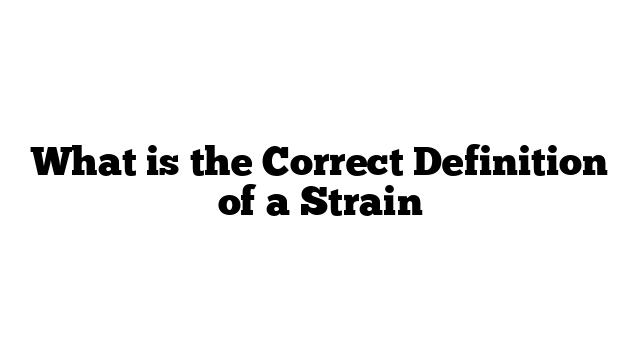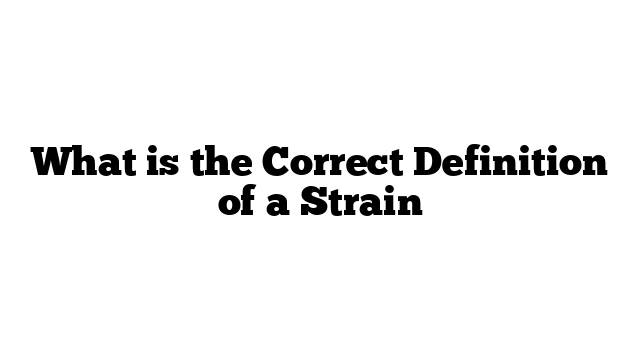organism. It is characterized by specific genetic makeup and distinct physiological or physical characteristics. Strains can be found in plants, viruses, bacteria, and other microorganisms. They are often used in scientific research and experimental purposes.
In the field of mechanics and materials science, strain refers to the deformation or change in shape of a material due to an applied force or stress. Stress and strain are closely related concepts, with stress being the force per unit area applied to a material and strain being the resulting deformation or change in shape. This relationship is important in understanding the behavior and properties of materials under different conditions.
In medical terms, a strain is defined as a bodily injury that occurs due to overexertion or excessive demand on resources. It is commonly associated with muscle or tendon injuries caused by stretching or tearing. Strains can occur in various parts of the body, such as the back, neck, shoulders, or legs, and can result from activities like lifting heavy objects, sudden movements, or repetitive motions.
When it comes to strains in the context of food preparation, it refers to the process of pouring the contents of a mixture through a sieve, perforated utensil, or fine-meshed cheesecloth. This is done to separate solid particles or impurities from liquids, creating a smoother texture or removing unwanted elements.
The term “strain” also has usage in everyday language. It can refer to a stretch, effort, or exertion, both physically and mentally. For example, someone can strain their muscles during a workout or strain their brain while solving a difficult problem. It can also describe a state of tension or pressure, such as straining a relationship or feeling strained under a heavy workload.
The word “strain” entered the English language in the mid to late 1200s and has since developed multiple meanings and applications. Its etymology suggests a sense of pulling tight or stretching to the utmost tension. The versatility of the term allows for its use in various contexts, making it a dynamic and adaptable word.
In conclusion, the correct definition of a strain depends on the specific context in which it is used. It can refer to genetic variants or subtypes within biological organisms, the deformation or change in shape of materials under stress, bodily injuries caused by overexertion, the process of separating particles from liquids in food preparation, or the stretching, effort, or tension experienced in different situations. Understanding the appropriate definition of strain in a given context is crucial for effective communication and comprehension.

